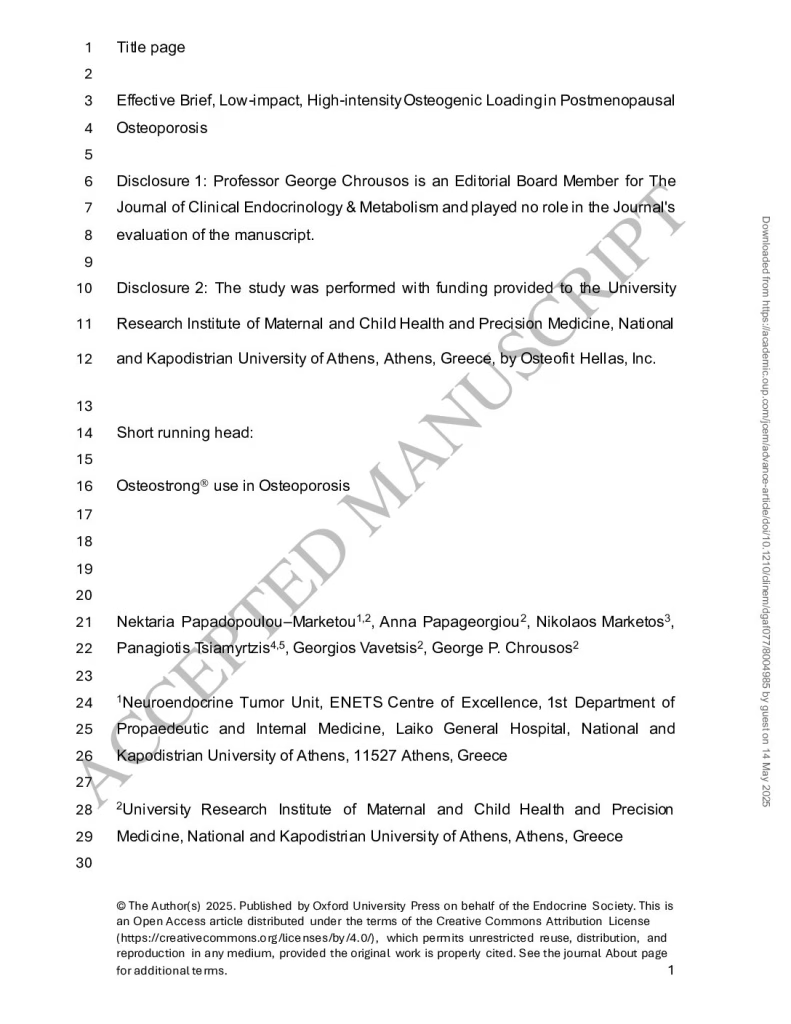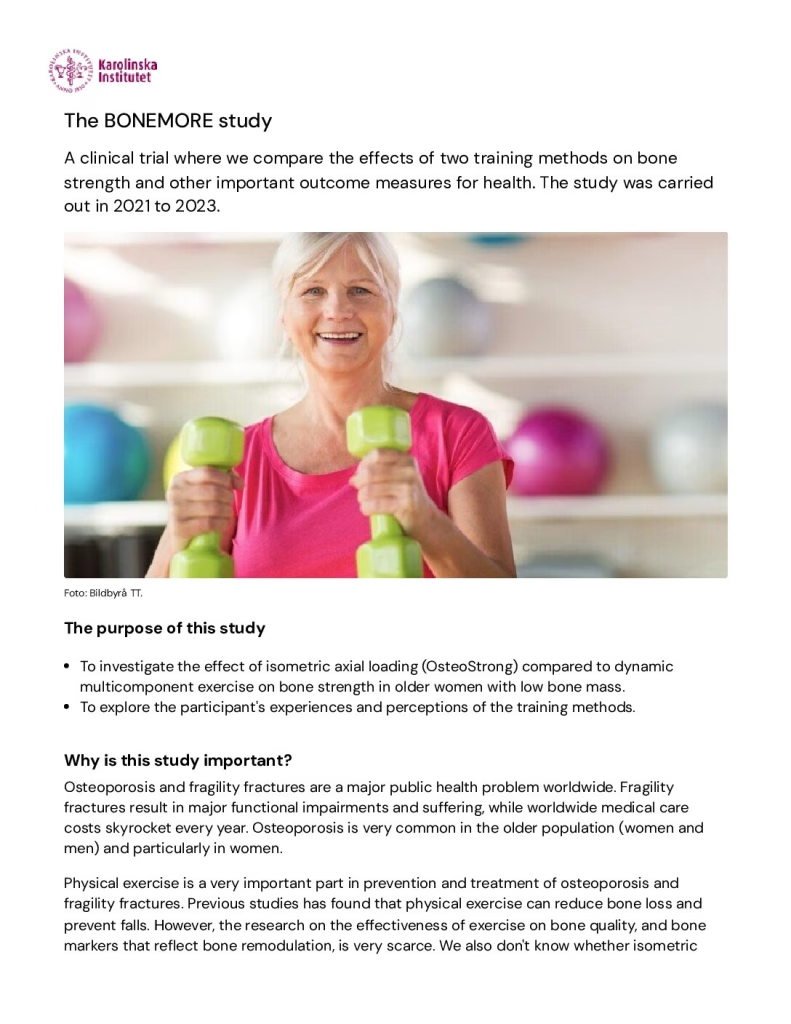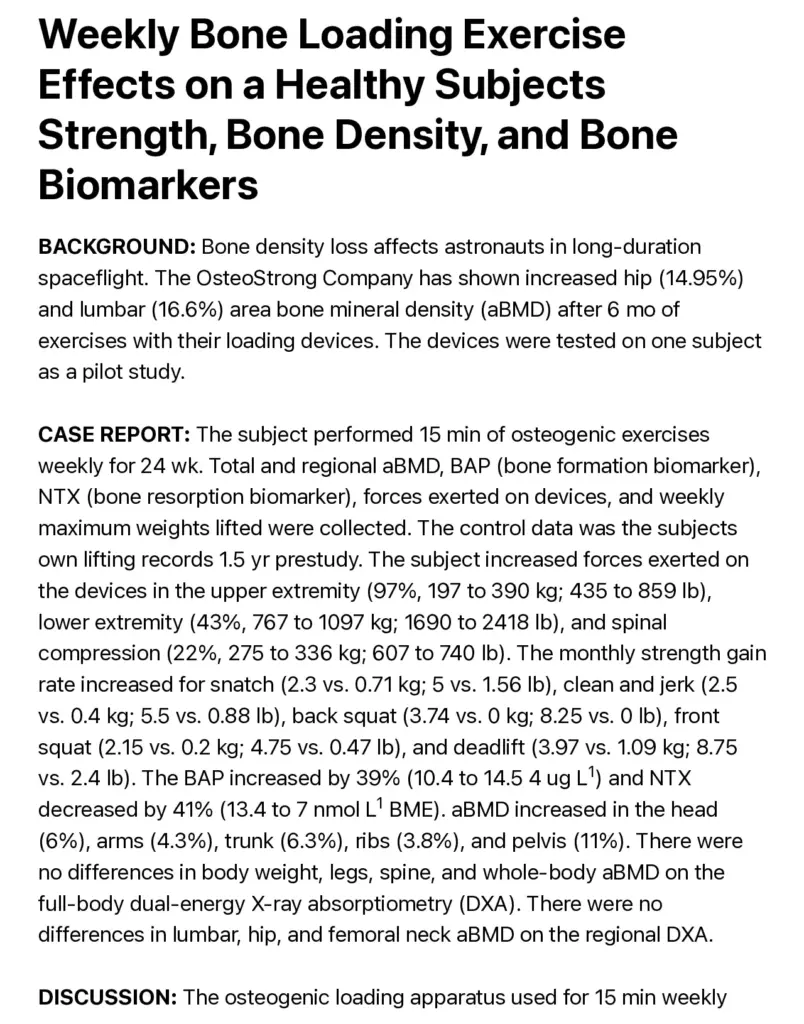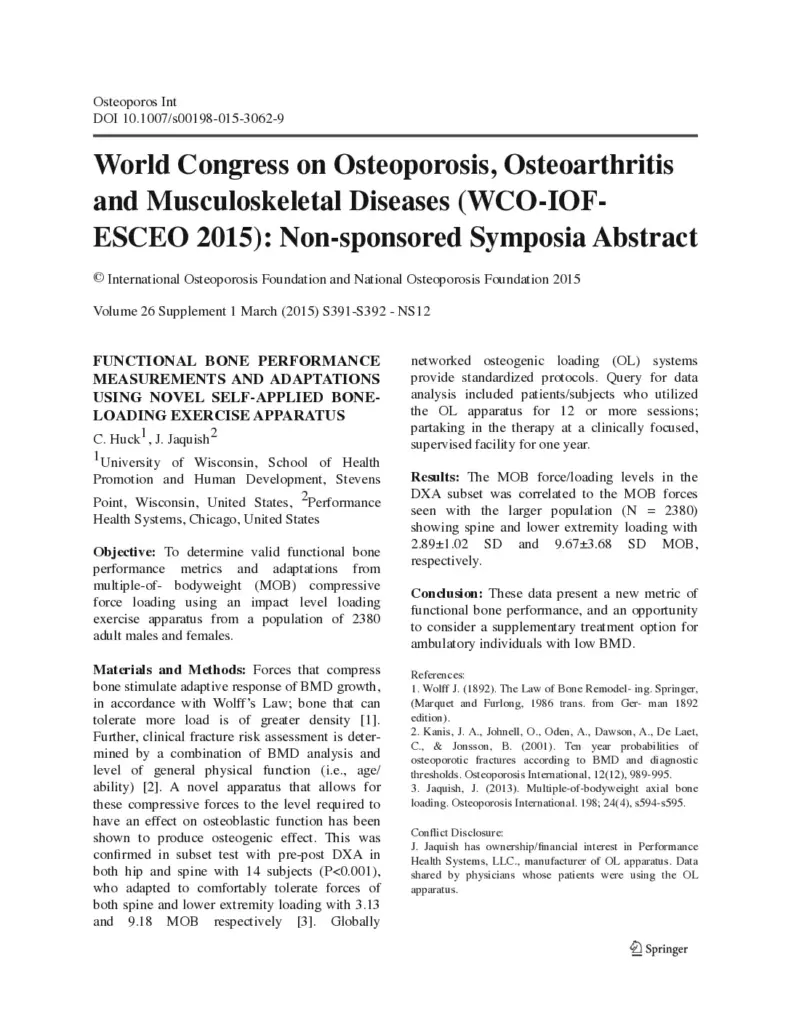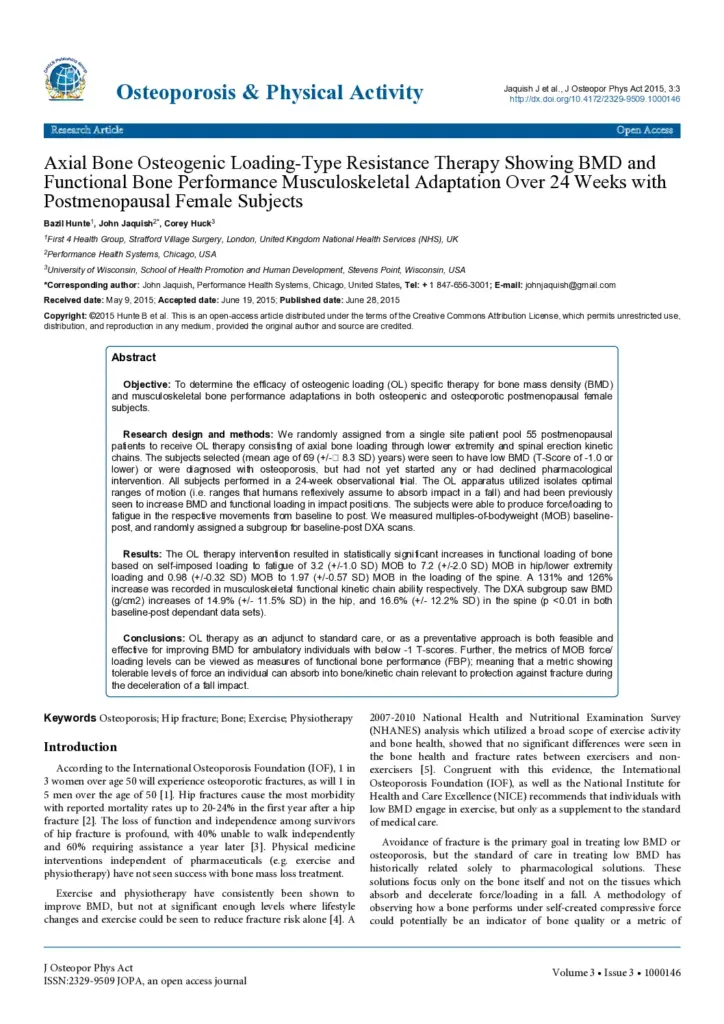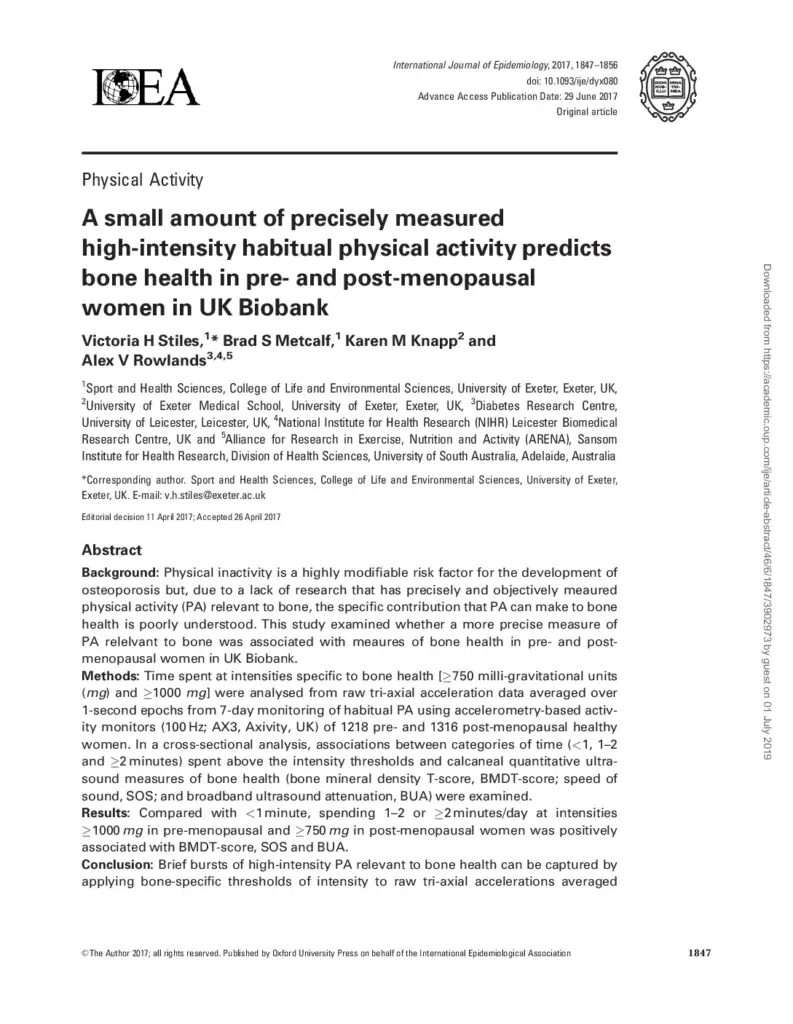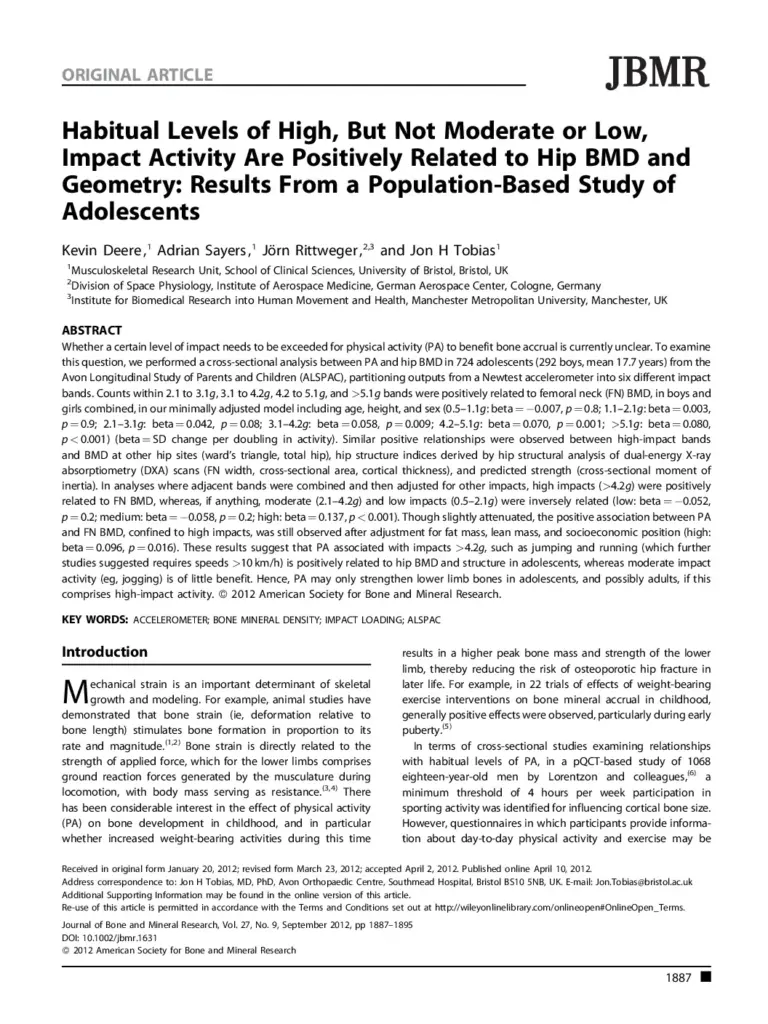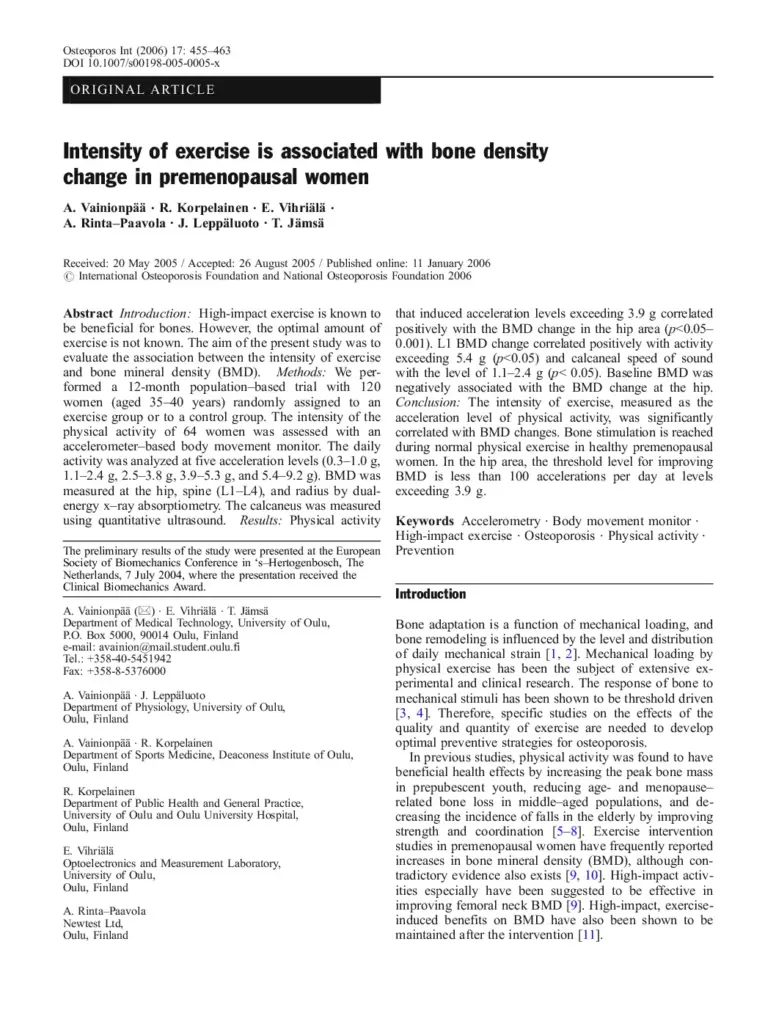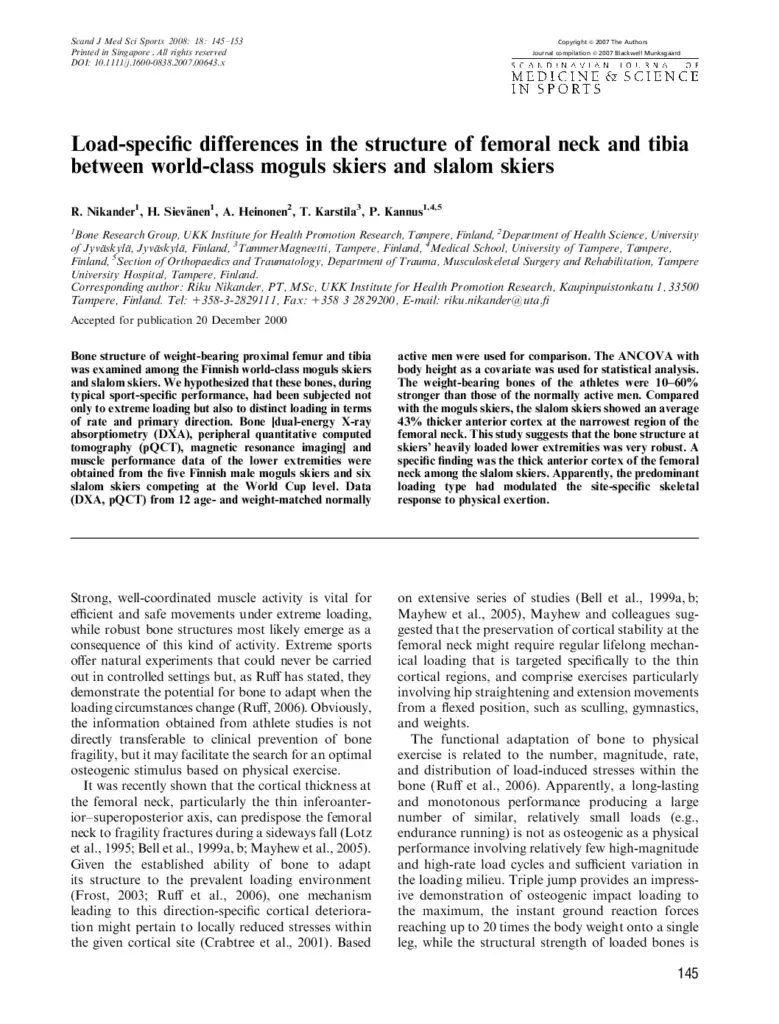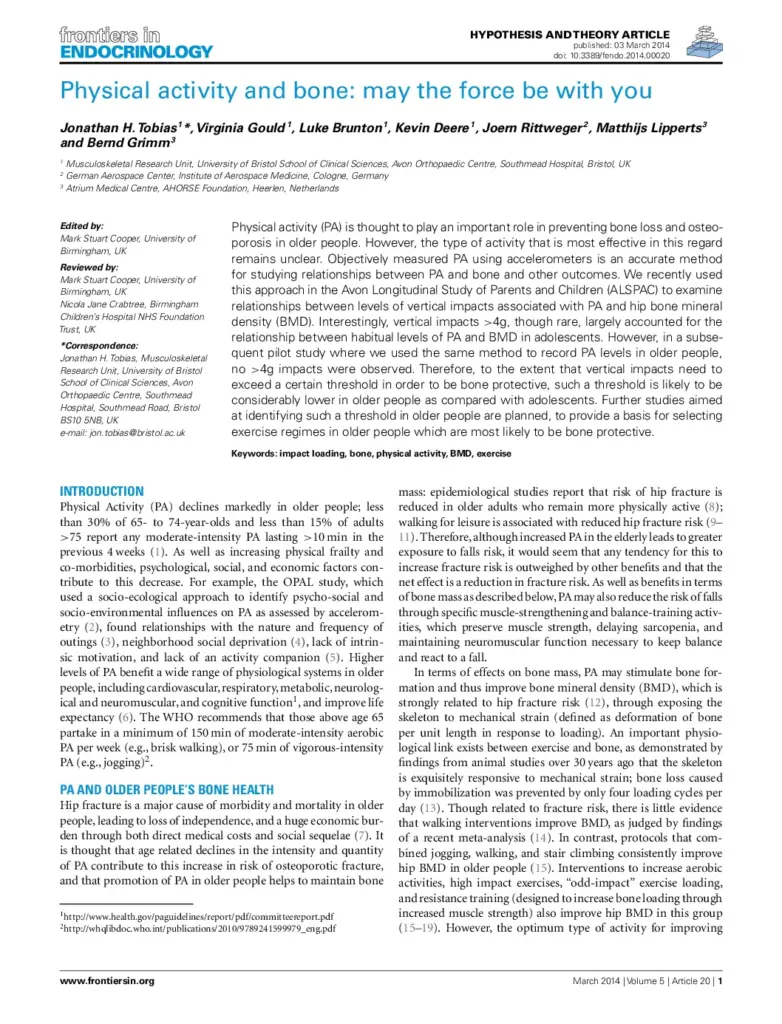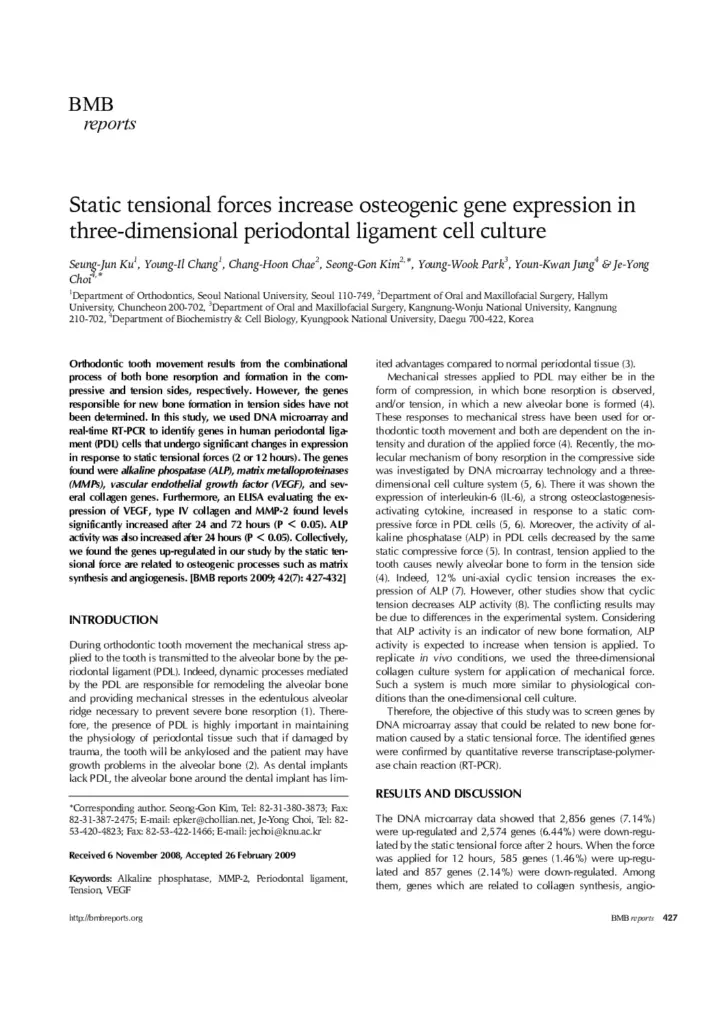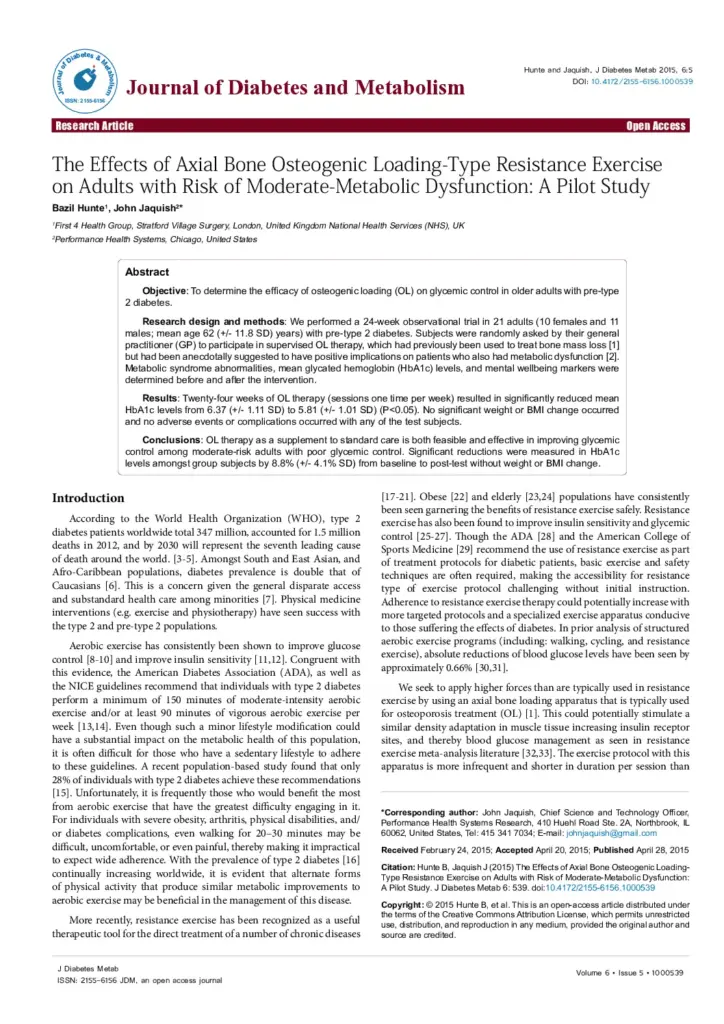The Science
OsteoStrong offers a highly effective, evidence-based musculoskeletal strengthening program that can be used to compliment pharmaceutical treatment and as a preventative protocol. Explore groundbreaking research and innovative technologies that drive our approach to strengthening bones and improving overall well-being.
WHAT IS OSTEOSTRONG?
OsteoStrong is a membership-based Integrative Health and Wellness Center with a focus on Musculoskeletal Strengthening.
The four device circuit takes only minutes once per week to complete. Under the direction of a skilled technician, users engage in a safe controlled movement on each device that results in a stimulus to the central nervous system triggering osteogenesis or new bone growth.
Each device provides instant biofeedback with a member’s impact emulation
force exertion measured in pounds and multiples of body weight.
Data is recorded and a report is sent to the member detailing their progress at the conclusion of each session.
WE UNDERSTAND
Bisphosphonates are generally the first line of defense for patients diagnosed with osteoporosis. Unfortunately, the risk of other problems can make this a complicated decision.
Until now there were few exercise-based non- pharmaceutical options that offered significant increases in bone density in a safe manner for even the most high-risk patients.
OsteoStrong offers a highly effective, evidence-based musculoskeletal strengthening program that can be used to compliment pharmaceutical treatment and as a preventative protocol.
WHY IT WORKS
The greatest effect on bone strength and health is the result of high-impact activity, and hundreds of studies have confirmed this, even identifying the minimum dose of force required through bone as being over 4 times bodyweight in the hip joint .
As adults, impact becomes associated with injury therefore adults intentionally avoid impact and thus even those who engage in exercise often fail to maintain bone health.
OsteoStrong utilizes a series of robotic musculoskeletal treatment devices utilizing high impact emulation, so that people can get the benefit of impact without the associated risks.
OsteoStrong increases bone density, improves balance and posture, and can even make you STRONGER!
10 Minutes, 1X / Week
The four device circuit takes only minutes once per week to complete. Under the direction of a skilled technician, users engage in a safe controlled movement on each device that results in a stimulus to the central nervous system triggering osteogenesis or new bone growth.
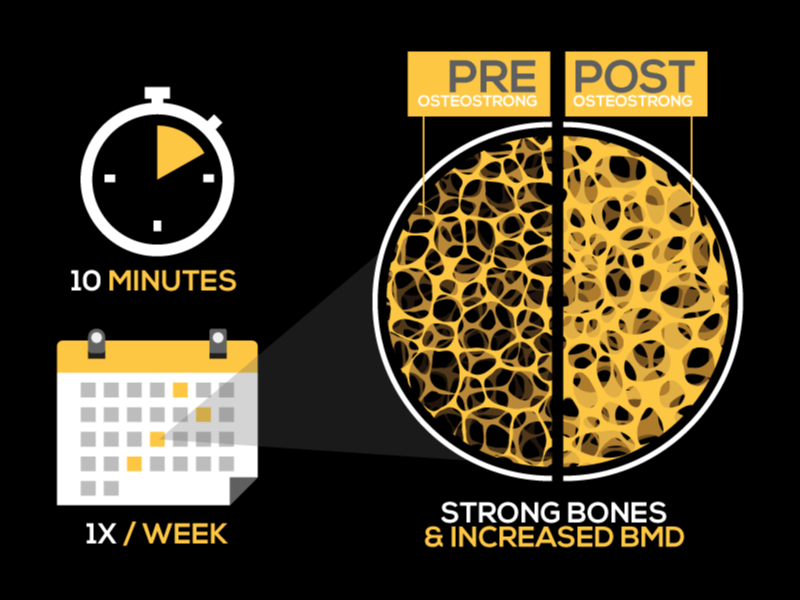
Bone Density Analysis
The four device circuit takes only minutes once per week to complete. Under the direction of a skilled technician, users engage in a safe controlled movement on each device that results in a stimulus to the central nervous system triggering osteogenesis or new bone growth.
Who can Benefit
- Anyone with Osteopenia or Osteoporosis
- Pre and Post-Menopausal women
- Anyone resistant to pharmaceutical treatment
- Deconditioned patients needing strength and balance training
- Anyone with balance and fall risk
- Individuals experiencing chronic pain or poor posture
- Anyone in need of post-physical therapy strengthening
